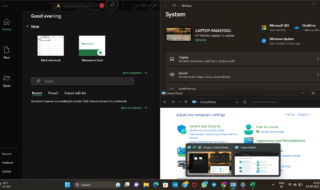4 Tips to Develop Apps Faster and More Efficiently
Developing and launching an application can be a time-consuming process, not to mention stressful. The longer it takes, the more money you spend since hiring programmers isn’t cheap.
Do you have an idea for an app that you’d like to build, but you dread the process? Do you struggle to communicate your requirements to a development team, or do you lack the budget to hire programmers?
If you’re looking for ways to make the app development process more efficient, this article is for you. Try the following tips next time you decide to create an app.

- Use a no-code app development platform
Technology has advanced to the point where you can finally build applications without messing with code. This is great news for everyone who wants an easy solution. With a no-code app builder, like Innoveo, you can build professional applications in an environment with full operational support to ensure you deliver your apps efficiently.
The no-code movement has been growing for some time. Beginning with no-code website development platforms, the no-code movement has finally found its place with app development, which reduces expenses and increases agility. With the right platform, you can develop applications up to ten times faster.
Instead of hiring a full-time team of in-house programmers, you can train any employee to build apps on a no-code platform, even if they have no prior knowledge of any programming languages. They’ll even be able to build APIs without knowing any code. That’s powerful!
If you already have software developers on staff, using a no-code app development platform means you won’t have to divert their attention from their current projects to get the apps you need.
- Use Scrum
No matter how you build your applications, with a developer or a no-code platform, Scrum will keep your team on track without letting issues fall through the cracks. There’s nothing worse than getting deep into a project and realizing you have to redo your code, and Scrum will help you avoid this situation.
Scrum is a team collaboration framework designed to solve complex problems more efficiently. Under this framework, your team will work iteratively to complete their work in small chunks at a time, while continuously experimenting and generating feedback to improve the project as they go along. Value is delivered incrementally and collaboratively.
With this framework, your app development process will be more efficient, and as a result, you’ll deliver better value.
- Take your time getting client requirements
Every developer knows it’s often a struggle getting clients to articulate their requirements, but nailing down client specs is essential. One small misunderstanding can force you to start over when you’re halfway through the development process.
For example, if a client doesn’t tell you about a feature they want because they assume it’s standard, you might not be able to add that feature without rewriting most of the code. This wouldn’t be so bad if clients were willing to pay extra for their oversights.
When you build a mobile application for a client, always take your time to pinpoint their requirements. As a general rule, never assume clients have told you everything upfront. Ask questions even if they seem redundant. You have to work at extracting information about desired features from clients because sometimes they don’t even know what they want.
On the other hand, if you’re dealing with a client who has too many required features, ask them to talk you through a user story for every feature. Doing this will force them to think about the purpose of each feature. Sometimes clients just want features because they “seem cool.” By forcing them to articulate user stories, it will also help them see when certain features aren’t worth adding.
- Offer and ask for suggestions
Whether you’re building an app for a client or your own company, feedback is crucial for success. If you’re the one building the application, ask for feedback along the way from the client to make sure you’re on track. Always work in small chunks so you don’t have to redo much of your work if there’s a problem. It’s also important to offer suggestions when you see something that can be improved or if you spot a potential issue. Other people in charge of the project might not agree, but at least you can give them the opportunity.
Don’t cut corners
No matter what, don’t cut corners, even when you’re being pressured by a client. Launching an incomplete or ineffective app will only result in disappointment and you’ll be blamed for the failure. To avoid launching too soon, set realistic timelines and pad them out for breakdowns.
Do whatever it takes to deliver the value promised in your contract.



